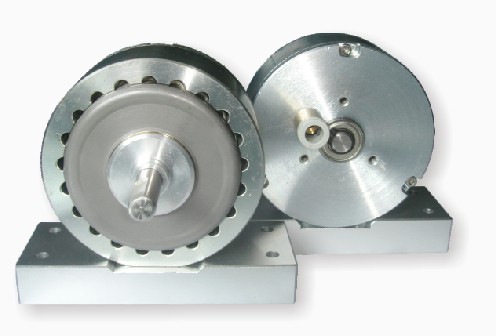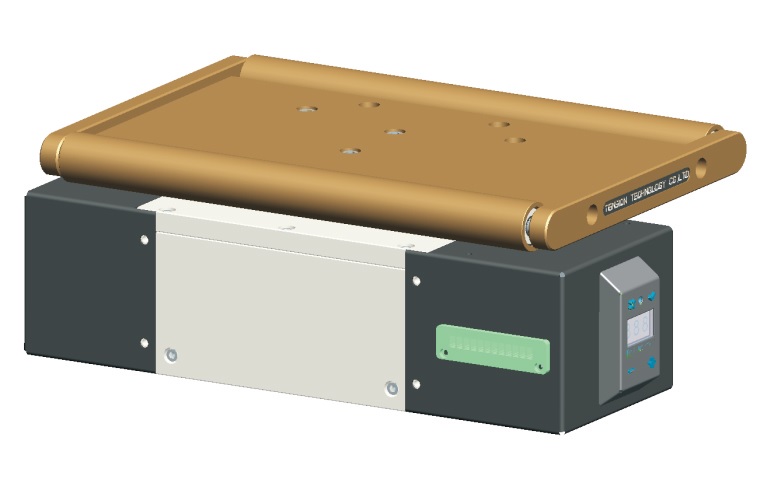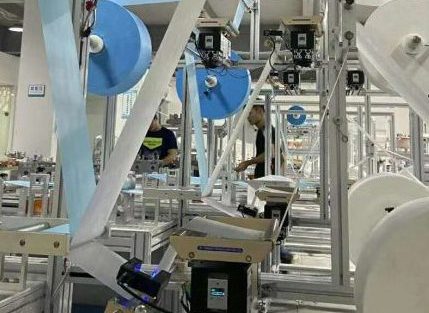⚡ Turbocharge Your Testing Discover the Future of High-Speed Motor Evaluation 🚀
In an era where precision meets velocity, industries demand motor testing solutions that keep pace with innovation. Enter high-speed motor test systems – the unsung heroes behind breakthroughs in electric vehicles, aerospace, renewable energy, and advanced manufacturing. Let’s explore why these systems are rewriting the rules of performance validation. ===== THE NEED FOR SPEED (AND ACCURACY) 🏎️ Modern motors aren’t just spinning – they’re revolutionizing. From whisper-quiet EV powertrains to turbine blades slicing through air at Mach speeds, today’s motors require testing frameworks that can: – Capture microsecond-level performance fluctuations – Simulate extreme operational environments – Deliver repeatable results across 10,000+ RPM cycles Traditional test benches crumble under these demands like cardboard in a hurricane. That’s where cutting-edge systems like the VelocityX Pro Series step in, offering real-time data acquisition at speeds that make legacy equipment look like sundials. ===== BEYOND RPM: WHAT SMART SYSTEMS MEASURE 📊 While rotational speed grabs headlines, next-gen testing digs deeper: 1. Thermal Behavior Tracking Infrared sensors map heat dissipation patterns across motor surfaces, predicting failure points before they glow red. 2. Vibration Signature Analysis Sub-micron displacement sensors detect imbalance issues invisible to the human eye – crucial for MRI machines and satellite components. 3. Power Quality Assessment Harmonic distortion measurements ensure motors play nice with smart grids and sensitive electronics. 4. https://holmgaard-hong-2.hubstack.net/power-up-your-performance-the-ultimate-guide-to-motor-loading-tests-you-cant-afford-to-ignore-1749344160 Mapping AI-driven algorithms calculate energy losses across 100+ operating points, spotlighting optimization opportunities. ===== CASE STUDY: WHEN SECONDS EQUAL MILLIONS 💼 A European hypercar manufacturer faced a dilemma: Their new axial flux motor could hit 25,000 RPM, but existing test rigs took 14 hours per unit to validate. By implementing modular high-speed testing cells, they: – Slashed validation time by 68% – Reduced false failure flags by 92% – Accelerated production ramp-up by 5 months The result? hysteresis brake M R\u0026D investment paid off in 11 weeks flat. ===== THE SILENT REVOLUTION IN TEST SAFETY 🔒 Testing at edge-of-physics speeds isn’t just about data – it’s about containment. Modern systems integrate: – Magnetic shielding chambers preventing EM interference – Automated emergency braking (0-15,000 RPM stop in 0.8 seconds) – AI-powered anomaly detection that halts tests 300ms before potential failures These features transform testing from risky experiment to predictable science. ===== CUSTOMIZATION: YOUR MOTOR’S PERFECT LAB COAT 🧪 One-size-fits-all testing died with cassette tapes. Today’s solutions offer: + Interchangeable load banks for hybrid/electric/fuel cell applications + Climate simulation ranging from -40°C Arctic cold to 150°C desert heat + Scalable power interfaces from 500W drone motors to 15MW marine propulsors A leading wind turbine manufacturer recently leveraged this flexibility to test 43 motor variants on a single platform – something that would’ve required 12 separate systems five years ago. ===== THE DATA DELUGE: FROM OVERWHELM TO INSIGHT 🌪️→💡 High-speed testing generates terrifying amounts of data: – 4TB per 8-hour shift (equivalent to 1 million novels) – 200+ simultaneous measurement channels  – 10-nanosecond timestamp resolution Modern platforms combat analysis paralysis through: – Edge computing that processes 85% of data at source – Machine learning models highlighting critical trends – Automated report generation in 17 languages An Asian robotics firm reported finding 23% efficiency gains simply by applying their test system’s predictive analytics to production line motors. ===== FUTURE GAZING: WHAT’S NEXT IN MOTOR TESTING 🔮 The horizon shimmers with possibilities: – Quantum sensors measuring electromagnetic fields at atomic scales – Digital twins predicting 10-year wear patterns in 48-hour test cycles – Self-optimizing systems that adjust test parameters in real-time – Blockchain-secured data chains for auditable quality assurance Early adopters of these technologies are already seeing 40% reductions in time-to-market for new motor designs. ===== CHOOSING YOUR TESTING ALLY: 5 CRUCIAL QUESTIONS ❓ Before investing, ask: 1. Can the system handle our fastest projected RPM + 25% safety margin? 2. What cybersecurity protocols protect sensitive performance data?
– 10-nanosecond timestamp resolution Modern platforms combat analysis paralysis through: – Edge computing that processes 85% of data at source – Machine learning models highlighting critical trends – Automated report generation in 17 languages An Asian robotics firm reported finding 23% efficiency gains simply by applying their test system’s predictive analytics to production line motors. ===== FUTURE GAZING: WHAT’S NEXT IN MOTOR TESTING 🔮 The horizon shimmers with possibilities: – Quantum sensors measuring electromagnetic fields at atomic scales – Digital twins predicting 10-year wear patterns in 48-hour test cycles – Self-optimizing systems that adjust test parameters in real-time – Blockchain-secured data chains for auditable quality assurance Early adopters of these technologies are already seeing 40% reductions in time-to-market for new motor designs. ===== CHOOSING YOUR TESTING ALLY: 5 CRUCIAL QUESTIONS ❓ Before investing, ask: 1. Can the system handle our fastest projected RPM + 25% safety margin? 2. What cybersecurity protocols protect sensitive performance data?  3. How quickly can technicians be certified on the platform? 4. Does the software integrate with our existing PLM/MES systems? 5. What’s the true cost per test when factoring in energy recovery features? A major appliance manufacturer avoided a $700k mistake by rigorously applying these criteria during vendor selection. =====
3. How quickly can technicians be certified on the platform? 4. Does the software integrate with our existing PLM/MES systems? 5. What’s the true cost per test when factoring in energy recovery features? A major appliance manufacturer avoided a $700k mistake by rigorously applying these criteria during vendor selection. =====  EPILOGUE: SPINNING TOWARDS TOMORROW 🌍 As motors evolve from mechanical workhorses to intelligent energy converters, testing systems become the bridge between blueprint and reality. The right high-speed evaluation platform doesn’t just validate designs – it illuminates paths to breakthroughs you haven’t imagined yet. Whether you’re pushing the boundaries of electric aviation or perfecting tomorrow’s surgical robots, remember: In the race for motor excellence, your testing system isn’t a tool. It’s your co-pilot. Ready to leave conventional testing in the dust? The future’s spinning faster than ever – make sure your quality assurance keeps up.
EPILOGUE: SPINNING TOWARDS TOMORROW 🌍 As motors evolve from mechanical workhorses to intelligent energy converters, testing systems become the bridge between blueprint and reality. The right high-speed evaluation platform doesn’t just validate designs – it illuminates paths to breakthroughs you haven’t imagined yet. Whether you’re pushing the boundaries of electric aviation or perfecting tomorrow’s surgical robots, remember: In the race for motor excellence, your testing system isn’t a tool. It’s your co-pilot. Ready to leave conventional testing in the dust? The future’s spinning faster than ever – make sure your quality assurance keeps up.